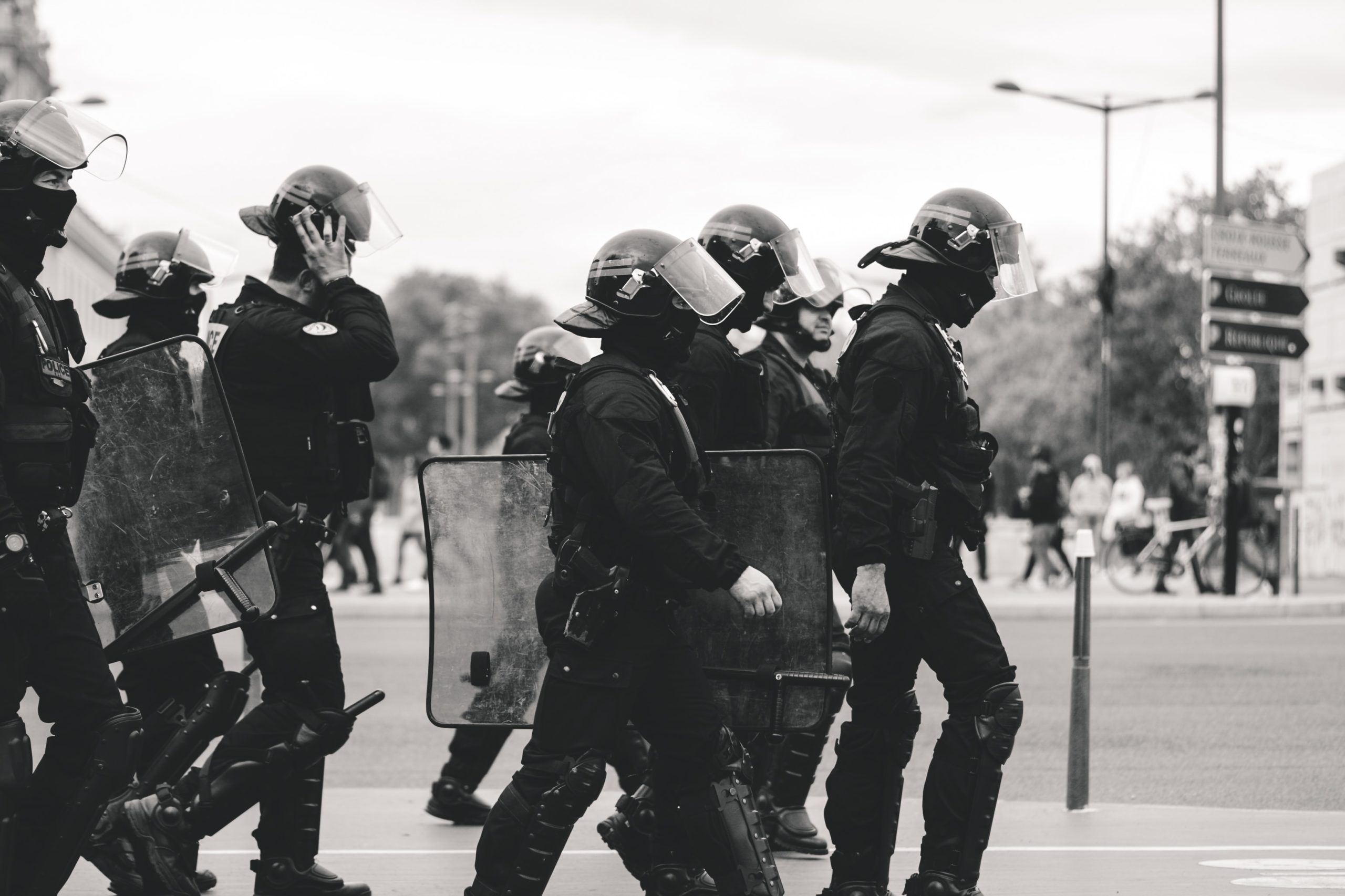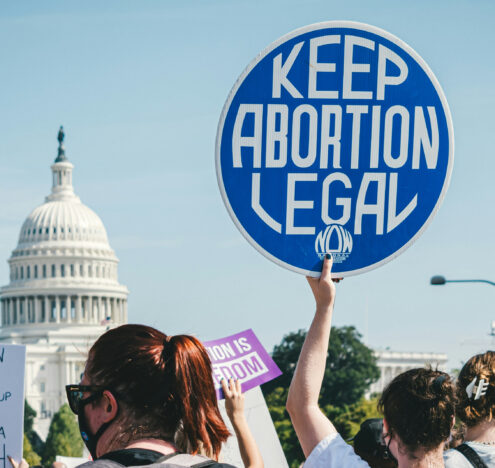The United States has a weapons problem. There are 120.5 firearms for every 100 residents, which is a troubling statistic that should get more attention as school shootings continue terrorizing communities throughout the United States, with the latest tragedy occurring at Robb Elementary in Uvalde, Texas.
However, the oversaturation of privately owned weapons is indicative of the larger institution of US militarization that pumps out and distributes weapons not only to the US military and to individuals but also the police. Police violence against US residents occupied public attention in the summer of 2020: police utilized gear from the military and private suppliers, firing tear gas and rubber bullets, and deploying drones and helicopters to surveil and disperse protests. The 1033 Program — named for the section that created it in the 1997 National Defense Authorization Act (NDAA) — allows for the transfer of surplus US military equipment to US law enforcement agencies and subsequently enables gross overuse of such equipment against civilians. However, the 1033 Program is only one program that allows local and state agencies to obtain equipment with the federal government’s help.
The 1122 Program, which was created in 1994 and expanded in 2009, is managed by the Defense Logistics Agency, the Department of the Army, and the General Services Administration. As described by the Defense Logistics Agency, “The 1122 Program enables state and local governments to take advantage of the discounts available to the federal government due to its large-volume purchases.” In terms of usage, law enforcement agencies are authorized to purchase equipment under the 1122 Program for “counter drug, homeland security, and emergency response operations.”
Our purpose in calling for greater transparency of 1122 is not to restore public trust in policing but rather to enable accurate assessments of damage by police upon communities and the risk of potential damage by an increasingly militarized police.
The 1122 Program, however, does not conduct audits. The justification is that it is “not a grant or transfer program,” and equipment bought through 1122 directly becomes the property of purchasing agencies, noted a New York State Point of Contact for the 1122 Program. Yet, controlled items available through the Army are ostensibly loaned to law enforcement agencies. Thus, there is a reason for alarm that there is not an audit process in place for 1122. Without internal auditing, the 1122 Program fails to create safeguards to protect against improper use of equipment obtained through it. The program’s lack of meaningful checks and balances has broader implications for American society.
Currently, a known centralized database of 1122 program purchases does not exist. However, Women for Weapons Trade Transparency recently completed our year-long investigation into the 1122 Program. The investigation revealed over $42 million of decentralized, never-before-seen data on purchases through the program. Our purpose in calling for greater transparency of 1122 is not to restore public trust in policing but rather to enable accurate assessments of damage by police upon communities and the risk of potential damage by an increasingly militarized police. Additionally, a lack of agency accountability for tracking purchases under the 1122 Program has demonstrated the grave need for a serious examination of the harms done by this program and by US police forces more broadly.
Barriers to Transparency
Throughout our efforts to retrieve data on state and local agencies participating in the 1122 Program, we encountered a lack of standardization across methods of data collection, storage, and record-keeping. For example, annually required usage forms submitted by agencies varied across states. Also, few states provided public information on the bureaucratic procedures of the program. This is because there is no requirement in the NDAA laws for a centralized process of archiving this data. A lack of “interagency coordination and uniform standards” made finding adequate data on existing inventory challenging. The General Services Administration, one of the major facilitators of the 1122 Program, denied that they collected data on transfers. As a result, credible and compelling data and information on 1122 remain sparse due to inconsistent reporting requirements at the state and national levels.
Unfortunately, a lack of consistent record-keeping is not the only barrier to transparency and accountability within these programs. Obtaining police records through Freedom of Information Act (FOIA) requests is notoriously difficult due to Exemption 7 restrictions, which specifically protect information compiled for law enforcement purposes. The exemptions were created to protect the safety of individuals, prevent people from circumventing the law, and above all, preserve the opaque law enforcement and surveillance methods that continue to be in use today. For example, in 26 states, police misbehavior records are protected by state FOIA laws, which means that they are considered “confidential” and are in place to “protect” the legal enforcement proceedings. And, without access to financial resources or a FOIA lawyer, US residents face even more obstacles to overcoming obscurity. In addition, various state interpretations of FOIA laws result in different levels of accountability, not only for police departments but for government agencies across the United States. This poses significant barriers to FOIA requesters, who must navigate multiple legal systems and statutes in order to obtain records.
The national data we received only accounts for a fraction of the information we were able to collect at the state level. Jan Janik, Colorado’s State Point of Contact for the 1122 Program, estimated $1 million in annual vehicle purchases by the state. This number contrasts the under $400,000 of national purchase data between 2017 and 2021 that the Defense Logistic Agency reported to us. The inconsistent data across local, state, and national levels uncovers a disturbing reality that participating states and the federal government largely do not account for 1122 transfers.
On top of poor record-keeping at state and local levels, the General Services Administration denied that they possessed any records of purchases under 1122 on the federal level, despite records we obtained from law enforcement agencies displaying millions of dollars of purchases from the administration. This presents an enormous issue: The obscurity from a lack of consistent data prevents the public from understanding how 1122 works. Women for Weapons Trade Transparency is in the process of requesting data from the Army, but our FOIA request is overdue. Unfortunately, we have not received any indication that they are working to fulfill our request, despite multiple attempts at contacting them.
Militarization at Home and Abroad
The United States maintains the highest level of military spending globally: more than the next 11 nations combined. Total US police force budgets would rank as the world’s third-highest military expenditure. But when the Department of Defense transfers or sells equipment to police, it gains a justification for increasing its budget, as police serve as an additional customer. And as the DOD’s budget continues to increase, it obtains more excess property to transfer to law enforcement agencies through programs, such as 1033, and more money to funnel to companies that also sell items through 1122. As a result, law enforcement agencies, such as Immigration and Customs Enforcement and Customs and Border Protection, are increasing in size and scope. For example, in the Biden administration’s recent budget proposal, ICE’s budget is set to increase by 13%, making it $8.1 billion.
According to the Defense Logistics Agency, “law enforcement agencies can obtain military-style equipment from multiple [emphasis added] federal government programs that provide support through grants or property transfers.” This cyclical militarization increases the capacities of the US military and US law enforcement agencies to control and oppress individuals internationally and domestically, all the while emboldening excesses of military contractors. While the United States remains the largest individual arms exporter in the world, the 1122 Program is one of several links between global and local violence.
The latest Stockholm International Peace Research Institute (SIPRI) report on trends in international arms transfers states that the United States accounted for 37% of all weapons exported globally from 2016 to 2020. Commenting on anti-Black police violence in Brazil and its similarities to heightened police repression of racial justice protests in the United States in 2020, anthropologist Christen Smith writes, “If a war logic is structuring our police forces, then what we’re seeing on the streets is exactly what we play out in other countries.” In other words, if the United States’ biggest export is violence, the Pentagon’s waste accumulating at home inherently puts people in danger.
In times of war, there is only one clear winner: weapons manufacturers. About one-third of the $14 trillion worth of DOD spending since the beginning of the war in Afghanistan has gone to weapons manufacturers. It is important to remember that the United States has a long history of using external wars to validate militarization both at home and abroad — and that US government agencies actively aid and abet this militarization through their shrouding of programs, such as 1122, in secrecy. Visit our 1122 Program abolition advocacy toolkit to take action.





















